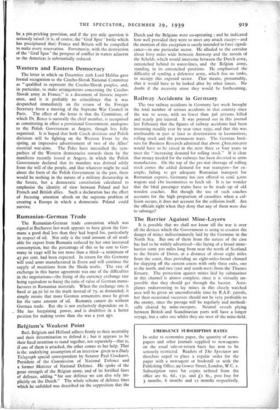Railway Accidents in Germany
The two railway accidents in Germany last week brought the total number of serious accidents in that country since the war to seven, with no fewer than 396 persons killed and nearly 300 injured. It was pointed out in this journal last February that the figures of railway accidents had been mounting steadily year by year since 1935, and that this was attributable in part at least to deterioration in locomotives, rolling stock and the permanent ways. The German Insti- tute for Business Research admitted that about L800,000,000 would have to be raised in the_ next three or four years to meet the " increasing demand for rolling stock." It is clear that money needed for the railways has been diverted to arms manufacture. On the top of the pre-war shortage of rolling stock comes the added demand for war transport—for ex- ample, failing to get adequate Rumanian transport for Rumanian exports, Germany has just offered to send 3,000 wagons and 180 locomotives to fetch oil. It is no wonder that the ldcal passenger trains have to be made up of old wooden coaches. But though the use of such coaches accounts for the high proportion of casualties when a col- lision occurs, it does not account for the collision itself. Are the officials right when they deny that any of them were due to sabotage?






























 Previous page
Previous page